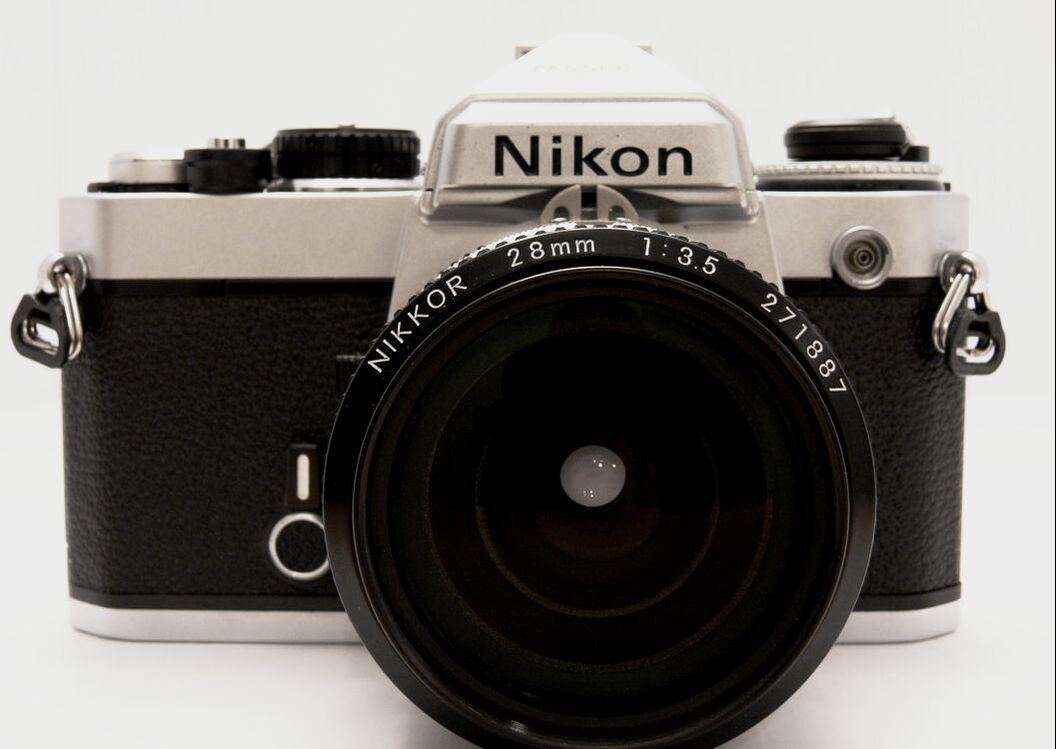|
Updated Jan. 9, 2021 The third article in our series "Choosing a Vintage SLR System" takes on the Nikon F-mount, arguably the most well-known, and definitely the longest-lived of all the 35mm SLR bayonet systems. After a brief introduction, we will break down our overview in this format: 1) Lenses, 2) Bodies, 3) Flash, 4) Accessories, 5) Reliability & Servicing. Nippon Kogaku (Nikon) began to build their reputation in the early 1950's as one of the premier Japanese optics manufacturers. Fortune and Life magazine photographers Horace Bristol and David Douglas Duncan were working in Japan and they were introduced to Nikkor lenses for the Leica M39-mount and Contax cameras then favored by photojournalists. Within a few years, Nikon introduced their famed S-mount series of rangefinder cameras that set new standards for rugged reliability. With the success of the Asahi Pentax SLR of 1957, Nikon found itself at a crossroads, with two management factions forming: one wanting to stick with rangefinders, and the other pushing for SLR development. Eventually (and fortunately for Nikon) the SLR project went ahead, drawing much from the SP rangefinder design. The result was the Nikon F of 1959, a professional-oriented machine. A whole line of Auto-Nikkor lenses underwent rapid development in the early '60s, giving Nikon one of the most extensive offerings of the early Big 4 (Canon, Minolta, and Pentax were the other companies). Nikon also developed a large assortment of accessories to increase the performance and versatility of the F: interchangeable finders, focusing screens, motor drives, etc. Throughout the 1960s and '70s, Nikon solidified its reputation as the first choice of photojournalists and widened its scope to include advanced amateurs, and by 1979, to the average consumer. By the early '80s, they had risen to second place in overall sales among the now-Big 5 (Olympus had elbowed its way in during the mid-'70s). That would be the high-water mark for the Nikon manual focus system (and all other MF systems), although Nikon would continue to produce MF bodies and lenses into the 21st century, which was longer than any other major Japanese manufacturer. So let's get going with Nikon.
4 Comments
Updated June 30, 2021 Welcome to our second system overview, this time featuring the Canon FL/FD system, in our "Choosing a Vintage SLR System" series. Following a brief introduction we will break things down via the format of 1) Lenses, 2) Bodies, 3) Flash, 4) Accessories, and 5) Reliability & Servicing. Canon was an early entrant into the SLR market in 1959 (the same year as Nikon) with its Canonflex model in what it called the R-mount. Compared to its competitors Asahi Optical Co. (Pentax), Chiyoda Kogaku (Minolta), and Nippon Kogaku (Nikon), Canon got off to a slower start in SLRs as far as sales went. This was due to a couple of factors: 1) Canon remained focused on the rangefinder market as the others went pretty much all-in on SLRs, and 2) the Flex and its immediate descendants the RP, and R2000 were quirky machines with a bottom plate-mounted film advance trigger which was rangefinder-derived. The R-mount, with its breech lock lens coupling, did serve as the basis for the succeeding FL and FD mounts, although it used different internal controls for aperture functions. With the final R-mount camera, the heavyweight RM (1962), Canon went more mainstream with the control configuration and it was their first SLR with a built-in meter. They still remained fourth in sales, however, because they trailed the other three manufacturers in camera/lens automation. |
C.J. OdenbachSuffers from a quarter-century and counting film and manual focus SLR addiction. Has recently expanded into 1980's AF point and shoots, and (gack!) '90s SLRs. He even mixes in some digital. Definitely a sick man. Categories
All
Archives
June 2024
|


 RSS Feed
RSS Feed